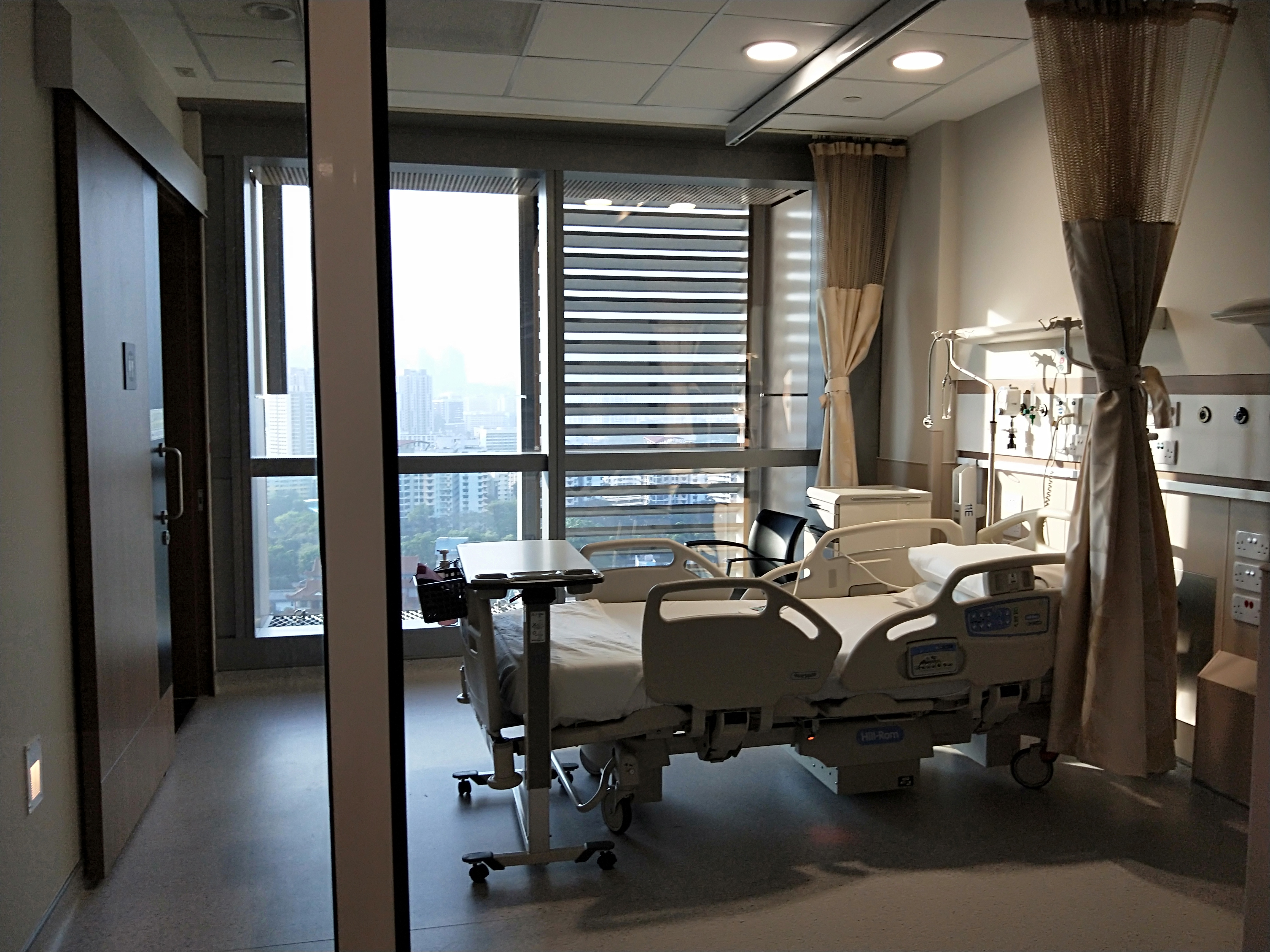The Negative Pressure (NEP) room is a negative pressured isolation room with additional barriers such as an anteroom and a self-closing inter-locking door. The patient room is negatively pressured in relation to the anteroom and the corridor. This prevents the contamination and potential transmission of infectious diseases to other areas of the hospital.

When the door to the room is open, air from the anteroom is drawn into the patient's room. The flow of air from the anteroom into the patient's room prevents outflow of infectious agents from the patient's room. Similarly, the anteroom is negatively pressured in relation to the corridor. When the door from the corridor is opened, air flows from the corridor into the anteroom.
The NEP room has a pressure gauge and alarm system to advise staff when pressurisation is not achieved.
The purpose of the anteroom is to provide:
Control of the entry and exit of contaminated air when the anteroom door is opened;
A barrier against the potential loss of pressurisation;
A controlled area where PPE can be donned prior to entry into the isolated contamination area.
The general design principles for the NEP room focuses on safety with the following key features:
a) Clear segregation of flows for patient, public, staff, clean and dirty materials;
b) Air flow and circulation;
Separate air handling unit (AHU) supplying clean air to different zones;
Single pass air-conditioning system and separate AHU;
Exhaust system with top–tiered High Efficiency Particulate Air (HEPA) filter (99.999%);
Exhausted air from patient rooms will be passed through HEPA filtration and Ultraviolet (UV) irradiation before being exhausted out.